Artist Tips: Mister Saturday Night on the Importance of Building a Proper DJ Booth
Over the past few years, Mister Saturday Night has undergone something of an expansion. In […]
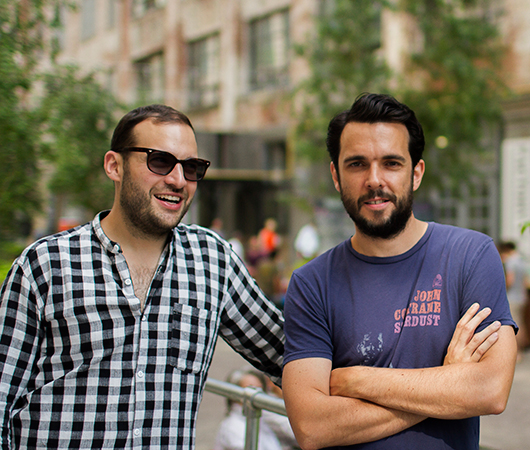
Artist Tips: Mister Saturday Night on the Importance of Building a Proper DJ Booth
Over the past few years, Mister Saturday Night has undergone something of an expansion. In […]

Over the past few years, Mister Saturday Night has undergone something of an expansion. In 2012, the two DJs behind the long-running party, Eamon Harkin and Justin Carter, added a label arm to their operation, and following a slew of original releases (including this year’s extensive ‘Brothers & Sisters’ compilation), the pair is now presenting a new mix CD, ‘Weekends and Beginnings,’ which drops this week. Still, at its core, Mister Saturday Night is a party, and even while facing the growing difficulty of finding suitable venues in New York City, both the intermittent Saturday night party and its weekly summertime cousin, Mister Sunday, appear to be bigger than ever. With years of experience under their belts, it’s fair to say that Harkin and Carter are essentially experts when it comes to throwing a proper bash, which is why we asked if they’d be willing to share a little bit of their knowledge with our readers. While acknowledging that there are countless elements that go in to throwing a good party, the duo felt like it could be most helpful by focusing on something very specific: setting up the DJ booth. Despite the fact that this task is at the absolute core of any successful event, it’s something that’s often overlooked, even by veteran promoters. The men of Mister Saturday Night know better, and have shared a few of their secrets about how to do things right.
Mister Saturday Night and Mister Sunday are portable parties. Saturdays happen at all kinds of different places on an irregular schedule, and even at Industry City, where we did Mister Sunday every week for almost half a year this year, the entire DJ booth and soundsystem gets set up and taken down every time a party happens. With the impermanence of our set-up, we’ve had to come up with systems and key pieces of equipment to make sure we’re comfortable no matter where and when we’re throwing a party.
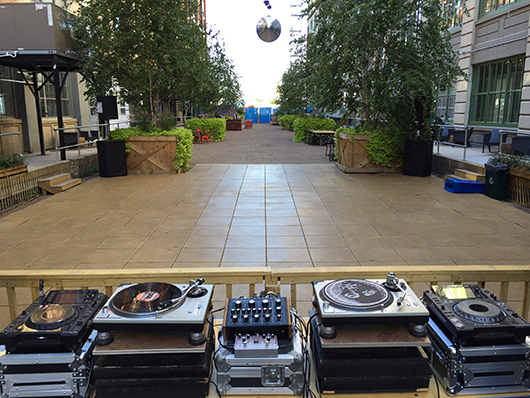
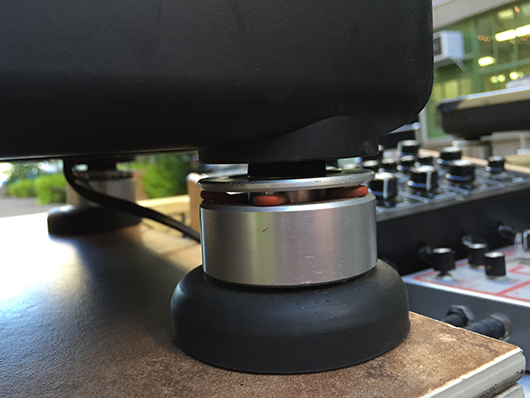
Kill The Vibrations
Justin Carter: A consequence of throwing parties in all kinds of spaces is that we’ve learned (the hard way) that feedback and needles skipping can really make DJing difficult. The first time we did a party at Market Hotel (a Brooklyn loft space that closed down back in 2010), everything sounded great at soundcheck, but as soon as a couple of dozen people were on the dancefloor, the needles wouldn’t stay on the turntables. Thus began our obsession. We often hang a turntable coffin from the ceiling with big ratchet straps. When we’re outdoors, we try to set up the booth on a concrete platform or some other surface that is totally immovable.
Even when you remove the bounce, there can still be feedback. That’s why we asked Ted Wohlsen, who used to do sound for us (until he went back to school to learn how to build boats… very smart dude), to build a set of dampening platforms for our turntables. He made a multi-layered, multi-directional column of foam and dense wood. On the top of that column is an inset, raised lip that holds a dozen or so squash balls. On top of those squash balls, there are two sheets of marble just large enough to hold a turntable. As an extra measure of protection, we use Isonoe Isolation Feet and Sorbothane Boots. Needless to say, not much vibration finds its way into the tonearms, and so there’s very little in the way of feedback.
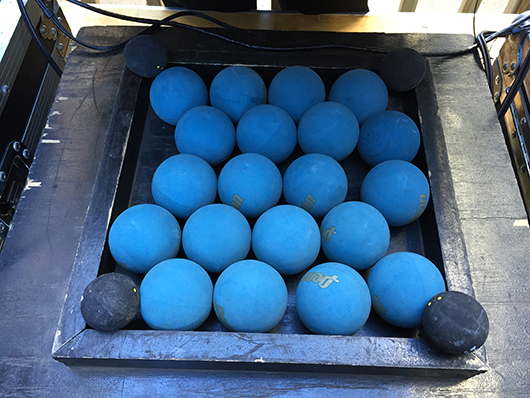
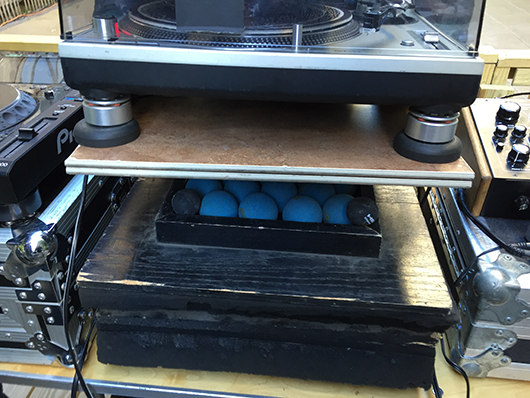
Where The Records Live
JC: It’s important to have plenty of space for records. We set up a big table directly behind the DJ booth and always have some empty milk crates around. I have an organization system made up of four categories: low tempo, organic uptempo, heady jams with drum machines, and party jams with drum machines. I try to keep it broad enough that I don’t get stuck in one genre for too long and so that when I’m putting records back on the shelves at home, it doesn’t take long; but I also try to narrow it down somewhat, just so I don’t have to look through all my records every time I turn around to pick the next song. It’s really important to have a system and a comfortable place to look through your records.
DJ Mixer
Eamon Harkin: We’ve been using the E&S DJR 400 mixer for a couple of years now and it’s become a really critical part of our set-up. (It’s actually so important that we have a back-up one as well!) The totally analog construction adds color and texture to the records, which really helps when mixing records from different eras and genres together. We also use the isolator frequently to add energy into tracks with live EQ. When you develop a strong connection to a crowd each week, and you know your records well, having a tool like the E&S, which allows you to eke extra energy out of those records in a way you know will work on your dancefloor, is a very cool thing. And because the E&S is portable, we take it on the road when we tour.
We also route a Fuchs Audio Plush Replay Junior guitar delay pedal through the E&S to give us a delay effect in our sets. We use this quite sparingly, but when we do, it allows us to create space and air, allowing for transition between certain tempos and different genres. The tube on this particular model gives really nice distortion as well, so it gives an extra richness not normally heard in a delay effect from a regular DJ mixer.
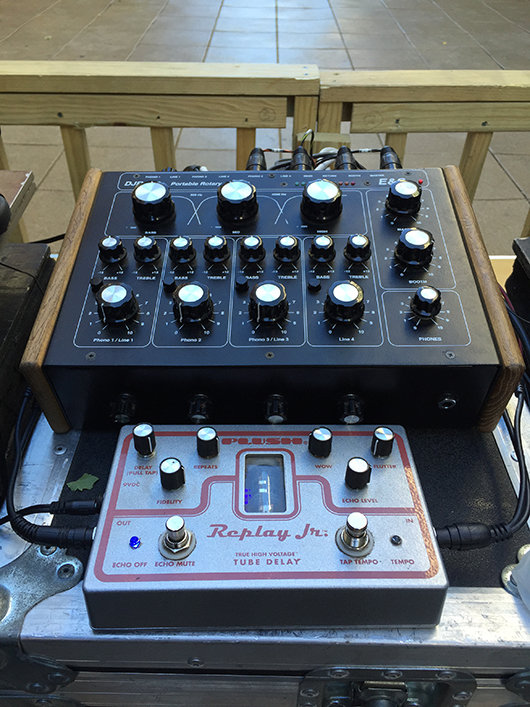
Booth Height and Booth Placement
EH: We always place the DJ booth either on the same level as the dancefloor or at an elevation of no more than one foot. Creating an intimate connection between the DJ and the crowd is really key to playing well as a DJ and for us, being right there on the dancefloor (or slightly elevated if it’s a bigger dancefloor) is what gives us that audience connection. You need to feel what the dancers are feeling and you need to be able to see those facial expressions and read those emotions. We hate playing on stages, not only because it creates separation between the DJ and crowd, but it also creates the weird dynamic where the dancers all face and watch the DJ. DJs are not interesting to watch and we don’t want to be watched and dancers should be dancing with each other and not all facing one way like they’re watching a rock band.

